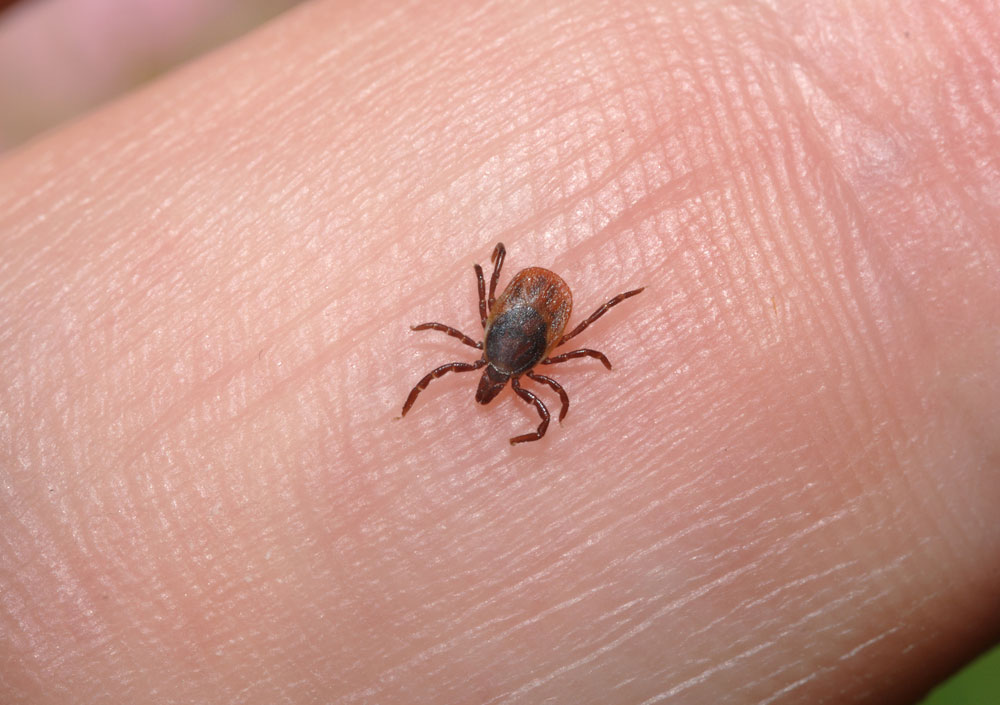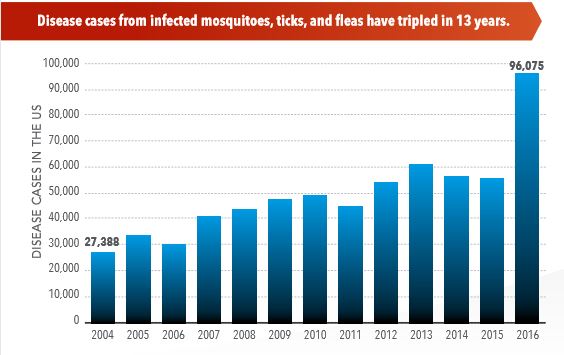Tickborne Diseases Are On the Rise. Is Climate Change to Blame?

Illnesses from mosquito, tick and flea bites are on the rise in the United States, according to a new report from the Centers for Disease Control and Prevention (CDC).
The report found that during the 13-year study period, the number of reported illnesses from mosquito, tick and flea bites more than tripled, going from about 27,300 cases in 2004 to 96,000 cases in 2016. Overall, more than 640,000 cases of these so-called vector-borne diseases were reported during the study period.
What's more, nine germs spread by these insects — including Zika virus and chikungunya virus, which spread by mosquitoes, and babesiosis, which spreads by ticks — were discovered or introduced to the U.S. during the study period, according to the report. [5 Weird Effects of Bug Bites]
"Illnesses from mosquito, ticks and flea bites continue to impact our nation," and the threat of disease is increasing, Dr. Robert Redfield, the CDC director, said in a news conference today (May 1). "It will take all of us working together to prevent and control diseases" from these insects, he said. "There is a role for everyone."

Using a national database, researchers analyzed reported cases of 16 different vector-borne diseases (six tick-borne diseases, nine mosquito-borne diseases and one flea-borne disease), from 2004 to 2016.
Of the 642,602 total reported cases, more than 75 percent were caused by tick-borne diseases — most commonly, Lyme disease. Cases of tick-borne diseases doubled during the study period, from about 22,500 in 2004 to about 48,600 in 2016. In addition, during the study period, researchers identified seven tick-borne diseases that could infect people and that were either newly discovered or newly introduced to the U.S., the report said.
While the increase in tick-borne illnesses was gradual, rising steadily each year, the increase in mosquito-borne diseases was more sudden, driven by recent epidemics of West Nile virus and Zika virus. For example, nearly 14,000 mosquito-borne illnesses were reported in 2012 — the year of a large West Nile virus outbreak — up from just 4,300 cases reported the year before. In 2016, there were more than 47,000 mosquito-borne illnesses, largely due to Zika virus.
Get the world’s most fascinating discoveries delivered straight to your inbox.
The only reportable illness spread by flea bites is plague, which is still relatively rare in the United States, causing between three and 17 cases each year during the study period, the report said.
What's behind the rise in vector-borne diseases?
There are several factors behind the increase in these diseases, the researchers said. For example, rising temperatures will tend to expand the range of ticks farther north, thereby expanding tick season, "which puts people at risk for a longer time," Dr. Lyle Petersen, director of the CDC's Division of Vector-Borne Diseases, said at the news conference.
When asked if the temperature increases were due to climate change, Petersen declined to comment, telling reporters, "that's the job of meteorologists." However, a 2016 report from the U.S. Global Change Research Program found evidence that climate change has contributed to the expanding range of ticks.
Other factors, including an increase in international travel and more people living near wildlife, also affect the spread of these diseases, Petersen said. And the germs that have been discovered in recent years also add to the number of reported vector-borne diseases in the United States, the CDC said.
The researchers noted that these illnesses often go unreported; for instance, a person may have contracted Zika or West Nile virus but have never gone to the doctor. And so, the true number of cases of these diseases is likely much higher than reported.
Government efforts to prevent vector-borne diseases include the funding of states and territories to detect and respond to infections and the development of improved diagnostic tests, vaccines and treatment for these diseases, the CDC said.
People can protect themselves from insect bites by using Environmental Protection Agency-registered insect repellent, wearing long-sleeved shirts and long pants, and taking steps to control ticks and fleas on pets, the CDC said.
Original article on Live Science.

Rachael is a Live Science contributor, and was a former channel editor and senior writer for Live Science between 2010 and 2022. She has a master's degree in journalism from New York University's Science, Health and Environmental Reporting Program. She also holds a B.S. in molecular biology and an M.S. in biology from the University of California, San Diego. Her work has appeared in Scienceline, The Washington Post and Scientific American.
